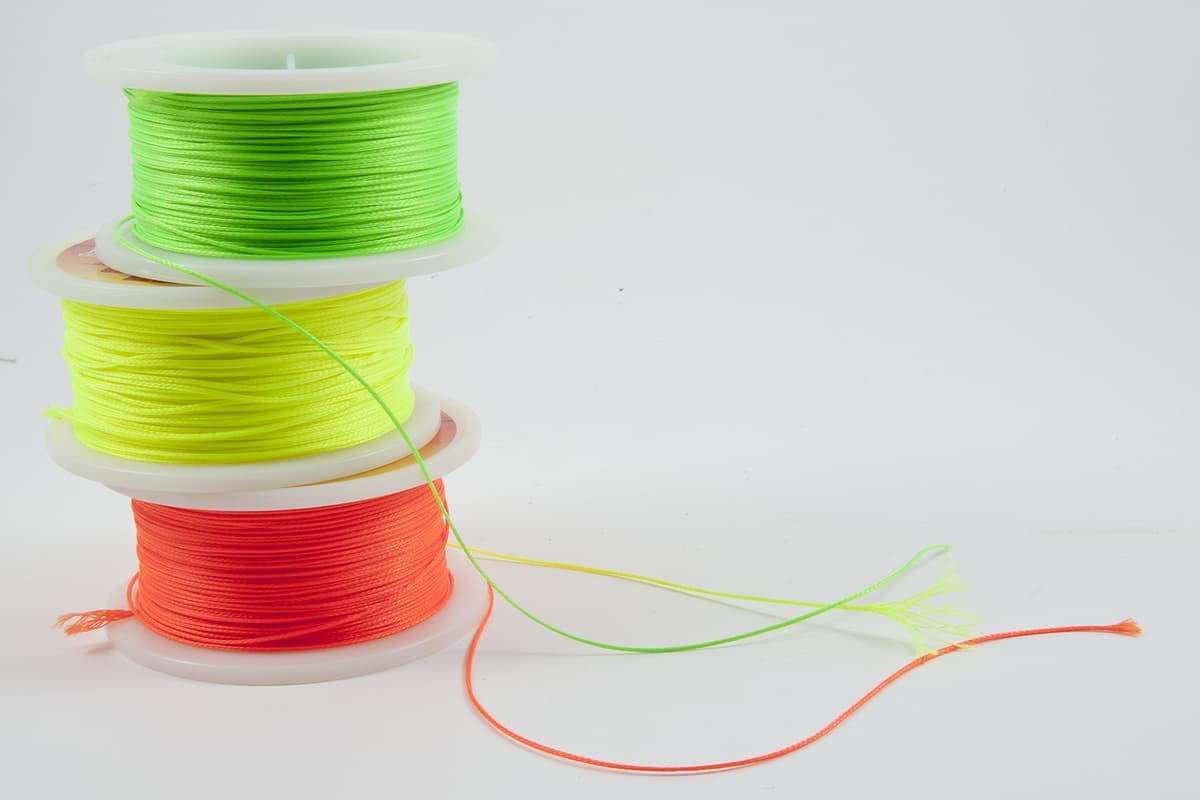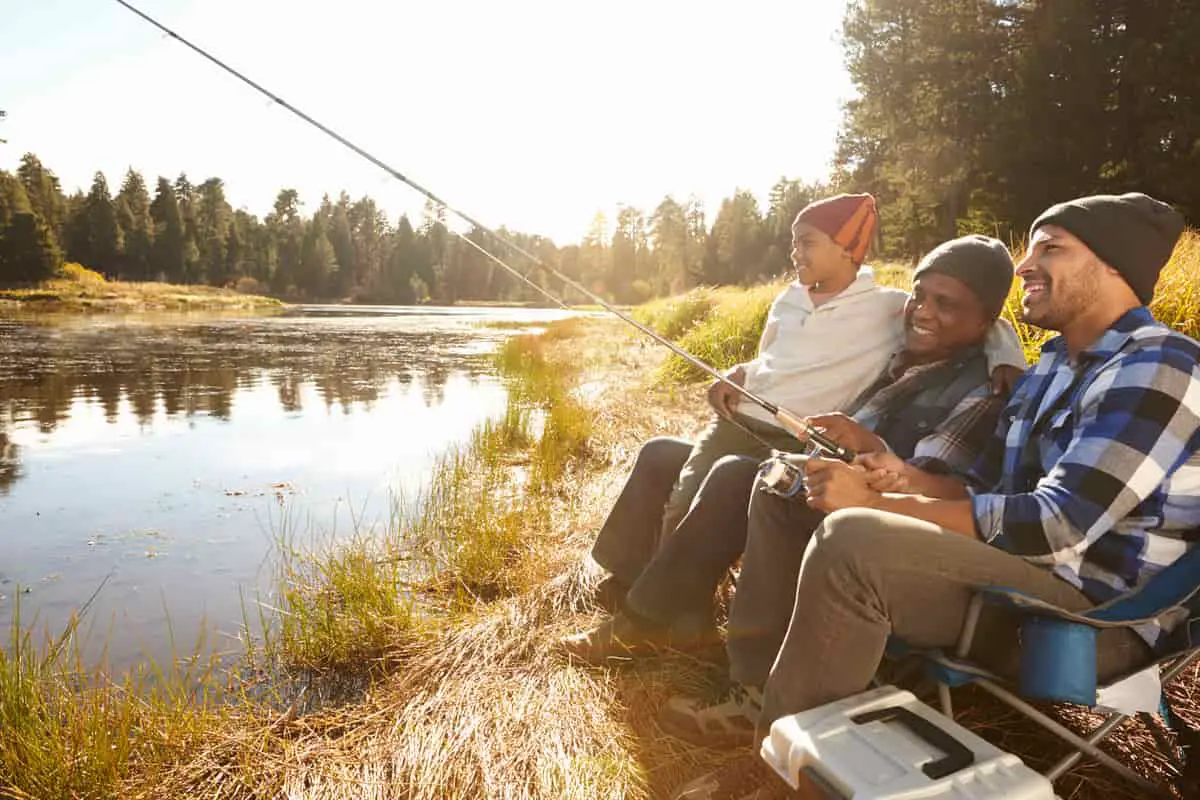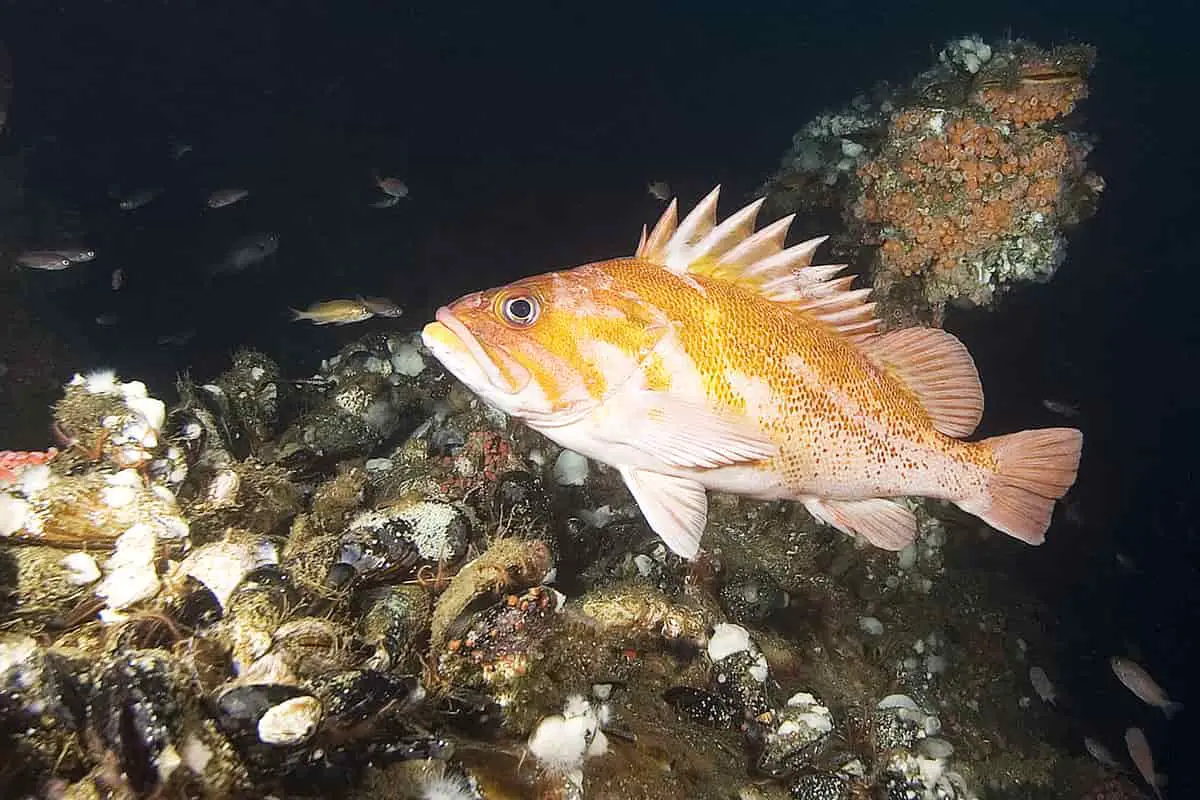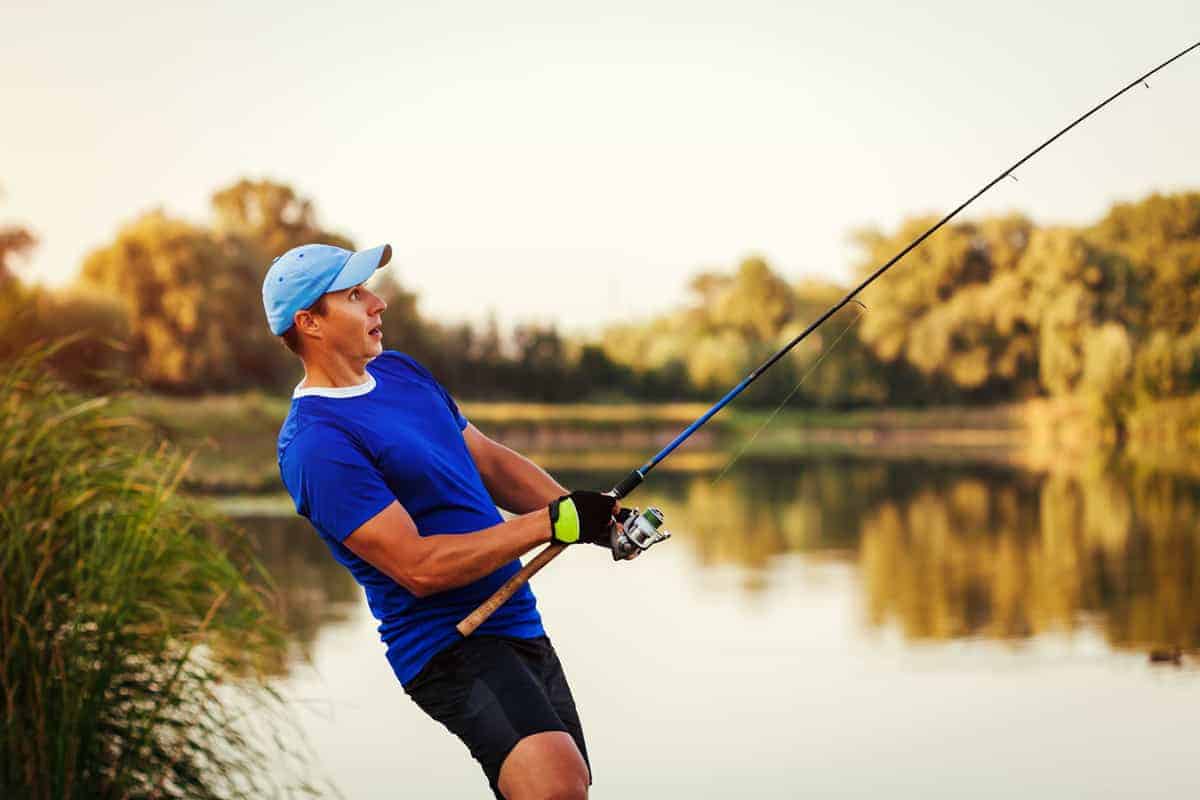
Braided lines have been around in various forms for many years. Current technology and modern synthetic materials have significantly improved braided lines. I believe that every angler needs to have at least one rod loaded with braided line in their arsenal and it might become your favourite line very quickly.
Now, what is braided fishing line exactly?
Braided fishing line is composed of multiple strands of synthetic materials woven into a very thin and super strong fishing line. It is excellent as a backing or main fishing line. Braided line has a small diameter and no stretch, which translates to great line sensitivity. A bonus is that braid casts far.
Anglers who have never used braided lines are losing out on a great fishing experience. Join me in looking at what braided line is and why you should use it.
What is Braided Fishing Line?
Braided line is a fishing line made from synthetic materials such as Poly-Ethylene fibres, Spectra, Dacron, Dura, and micro-Dyneema.
As the name implies, braided lines are made from individual strands woven into a single line. Braided lines are woven from 2 to 10 strands depending on the application the line is designed for.
Braided lines are about 25% thinner in diameter when compared to mono or fluoro lines. Visually braided lines look more like string or cord than traditional nylon-type lines.
Braided lines are available in many colours, ranging from solid colours to camouflage pattern lines. Virtually every fishing application has been catered to make the line less visible to fish.
Braided Line Pros and Cons
The below table lists the pros and cons of braided lines:
Pros of Braided Fishing Line
- Great for casting
- Floats on water
- Good Knot Strength
- Suited to all reel types
- Many different types of braid are available
- Good for heavy leader material
- Can last for years
- Very strong
- Very thin line diameter
- Great line sensitivity
- Waterproof
- No line memory
- Can cut through underwater vegetation.
Cons of Braided Fishing Line
- Highly visible in the water
- Special knots are required to tie braided lines
- Colours fade over time
- Expensive to buy
- Requires a leader line for better presentation
- Can be tricky to cast with
- Can cut your skin if the line is under tension
- Low abrasion resistance
- Wind knots can form when casting.
Why Should You Use Braided Fishing Line?
Here is why anglers like to use braided fishing lines:
- Strength: Braided line is made from woven fibers of polyethylene, which makes it extremely strong and durable. This makes it a good option for fishing for larger fish that require more strength and resistance.
- Sensitivity: Braided line has little to no stretch, making detecting bites and setting hooks easier. This is particularly useful when fishing in deep or murky waters.
- Small diameter: Braided line has a smaller diameter than monofilament or fluorocarbon lines, which allows it to cast farther and with lighter lures or rigs. This makes it a good option for fishing in clear water conditions where fish may be more easily spooked.
- Abrasion resistance: Braided line is resistant to abrasion and damage, which makes it a good option for fishing in rocky or snaggy areas where other types of line may break easily.
- Versatility: Braided line can be used in various fishing scenarios, including deep sea fishing, freshwater fishing, and fly fishing.
There are several reasons why anglers choose braided fishing lines over other types of fishing lines. Its strength, sensitivity, small diameter, abrasion resistance, and versatility make it popular among experienced anglers.
What Is Braided Fishing Line Good For?
Braided fishing line is particularly good for:
- Fishing in deep water: Braided line sinks faster than other types of line, which makes it a good option for fishing deep water or fast-moving currents.
- Jigging: Jigging is a fishing style that involves moving bait in a vertical motion to attract fish. Braided fishing line is a good option for jigging because it has little to no stretch, allowing for better sensitivity and easier detection of bites.
- Fishing with lighter lures or rigs: Braided line has a smaller diameter than monofilament or fluorocarbon lines, which allows it to cast farther and with lighter lures or rigs.
- Fishing for larger fish: Braided line is stronger and more durable than other types of line, which makes it a good option for fishing for larger fish that require more strength and resistance.
- Casting: Braided fishing line is a good option for casting because it has a small diameter, allowing for longer casts and better accuracy.
Is Braided Fishing Line Better Than Other Fishing Line Types?
There is no such thing as one type of fishing line being the best for all cases. Braided fishing line is no different, despite popular belief.
When it comes to fishing line, there is no one-size-fits-all answer to whether braided fishing line is better than other types of fishing line. Each type of line has its own pros and cons, and the choice of fishing line depends on the angler’s fishing style and the conditions of the water being fished.
Many anglers will opt for braided lines because of their strength for having such a small diameter, superior ability to cast further than other types of lines, especially if you use light lures, and because braided lines don’t stretch, allowing anglers to easily feel bites and set the hook quickly.
There is no clear winner when it comes to whether braided fishing line is better than other types of fishing line. Each type of line has its own strengths and weaknesses, and the choice of line depends on the angler’s fishing style and the conditions of the water being fished. It is important to experiment with different types of line and find the one that works best for your individual fishing needs.

Is Braided Fishing Line Worth It For Beginners?
Braided lines can be a good option for beginners, but they may not be the best choice for everyone. Here are some factors you might want to consider before getting yourself a new spool of braided fishing line:
Cost: Braided fishing line is more expensive than other types of fishing line, which can be a disadvantage for beginners who are just starting out and may not want to invest a lot of money in their fishing gear. Check out the top 100-selling brands of braided fishing lines on Amazon. Braided lines vary according to brand and can range significantly in price.
Here is a list of a few of the popular brands in the lower, mid, and upper price ranges
| Brand | Braid Line Available | Price Range |
|---|---|---|
| Piscifun | 6lb – 150lb | $5.99 – $31.99 |
| Angryfish | 5lb – 200lb | $6.99 – $25.99 |
| KastKing | 10lb -150lb | $14.99 – $64.99 |
| Rikimaru Store | 6lb – 170lb | $13.98 – $49.98 |
| Reaction Tackle | 6lb – 300lb | $7.99 – $99.99 |
| PowerPro | 5lb – 250lb | $10.41 – $508.99 |
Knot tying: Braided fishing lines can be difficult to tie knots with, which can be frustrating for beginners still learning to tie knots.
Sensitivity: Braided fishing line has little to no stretch, which can make it more sensitive and easier to detect bites. However, this can also make it more difficult for beginners to feel the fish and set the hook properly.
Visibility: Braided fishing lines are more visible underwater than other types of fishing lines, which can spook fish in clear waters. This can be a disadvantage for beginners who may not yet have the experience to know how to compensate for this.
Handling: Braided fishing lines are more difficult to handle than other types of fishing lines. This can be a disadvantage for beginners still learning to cast and retrieve properly.
Beginners might be better off starting with a more affordable and easier-to-handle type of fishing line, such as monofilament or fluorocarbon, then graduate to braided line after gaining more experience and confidence.
Potential Challenges Of Using Braided Line
Below is a list of potential challenges when using braided lines. All of these can easily be overcome and shouldn’t detract from braided line, which is an excellent product.
Braid Does Not Stretch
Since braided line doesn’t stretch, bites by fish are felt clearly by the angler.
By braid not stretching, the pressure exerted by the fish and the angler is directly transferred by the braided line, increasing the odds of something breaking.
When fishing with braid, it’s crucial to have the reel’s drag set at the correct tension.
Too tight, the line or rod may break, or the hook may pull free from the fish. Too loose, and a backlash may occur on the reel, or fish will pull line, emptying out your reel.
A leader line made from fluorocarbon is usually attached between the braided line and the hook or lure to counter the effects of not stretching in a braided line.
A leader line is often called a shock leader and assists in reducing the line’s visibility but most importantly takes the edge off the strike when setting the hook.
Is It Harder To Tie Good Knots With Braid
A braided line is more problematic to tie knots than fluoro or mono lines when it is new.
Knots have the potential of slipping and coming undone when not appropriately tied. Fortunately, other knowledgeable anglers have encountered this issue long before us and have solutions.
These are three popular knots for use with braid and Fluoro lines:
- Double Uni-knot; Braid to a leader line.
- Blood knot; Braid to a leader line.
- Palomar knot; Braid to a hook, lure swivel.

Braided Line Is Less Abrasion Resistant Than Other Lines
It’s a well-documented fact that braided lines have lower abrasion resistance than other lines. Despite the lower abrasion resistance, this does by no means mean that braid will snap easily.
Braided line is excellent for use in waterways containing heavy underwater vegetation, where fish hide out in the cover. Braided lines work well for this application and often cut their way through soft vegetation during a fight.
Braided lines don’t do where sharp rocky outcrops and barnacles are found. Braid being a soft multistrand line, the individual strands making up the line can be easily severed, compromising the tensile strength on the line.
A fluorocarbon line is best to use on rocky shorelines. Consider making a long leader with fluorocarbon to minimize the chances of your braid making contact with any rocks.
Braided Line Is Visible To Fish
Braided lines contain no nylon materials and thus cannot absorb light underwater, making braided fishing lines visible underwater.
Many line colours are available for braided lines, which can greatly assist in reducing the visibility of the line. Picking the right colour for your fishing depth will help make your line blend into the background.
When targeting timid fish species, the best option is to attach a fluorocarbon leader line to the end of the braid, which will effectively move the braid further away from the bait, leaving the invisible fluoro line to do its magic on the fish.
Braided Line Floats
Braided line floats in water. As such, braided lines are only suitable for use with topwater lures or where a sinking bait or sinker is needed.
Using a monofilament or fluorocarbon leader of the appropriate length can overcome this problem to a large degree.
Braided Line For Trolling
Braided lines are generally not the first choice for trolling rigs.
Most anglers don’t use braid as a trolling line due to its lack of stretch. This lack of stretch can put your rod at risk of breaking from the sudden strike from fast-moving fish. Mono and fluoro lines are far better options for trolling as these lines do stretch and act as a shock absorber.
Set Your Reel Drag Correctly When Using Braided Line
Setting your reel drag is one of the essential tasks when fishing with a braided line.
The reel’s drag controls the amount of force required to pull the pull.
Should your drag be set too loose when fighting a fish, the fish will be able to pull the line out of the reel too easily. If this happens, you cannot tire out the fish to reel it in.
The consensus seems to be that drag resistance should not exceed half of your lines test rating from my research. So if you use a 20lb braid, don’t go over 10lb resistance on your reels drag.
Setting your reel’s drag can only be done accurately using a scale. A scale used to weigh a fish is ideal for this purpose.
How To Set Your Reels Drag Accurately
Ask a buddy to assist in holding the scale.
- Attach the fishing line directly from the reel to the scale without passing through the rod guides.
- While holding the reel firmly, ask your buddy to apply pressure on the line by pulling on the scale and calling out the reading while adjusting the drags tension on the reel.
- For a 20lb breaking strain line, don’t exceed 10lb on the scale.
You can start with a loose drag and work your way up or vice versa.
The required result is to end up at the scale reading 10lbs before the drag releases the tension on the line. If the drag feels too tight, lighten it up a little. Every angler has their preference.

Safety Tips When Using Braided Lines
Braided lines are solid lines that are designed not to break easily. The thin diameter of braid will pose some risk for the angler if they get a finger, arm or leg, etc., stuck in a loop while pressure is applied to the line.
A braided line could potentially cut very severely if things go wrong. Avoid wrapping these lines around your hand or arm when trying to snap off the line when snagged.
If the loops wrapped around you start slipping under pressure, you will be going for stitches.
Also, never grab hold of the line when a big fish starts stripping the line off your reel.
Your fingers are most at risk when it comes to handling braid. It is critical to use proper protection when handling braid if you’re not used to it.
Braided Line For Salt Water Use
Most braided lines can be used successfully for both bottom and topwater fishing.
The braided line has excellent sensitivity, which transfers bites clearly to the angler even are great depths.
Disposing of Used Braided Line Responsibly
Nylon-based fishing line can take up to 600 years to fully degrade once thrown away. The downside of the more complex materials used in Braided lines is that they take even longer to degrade naturally.
Remember, even the tiny line clippings will be in the environment for a very long time if not discarded responsibly.
Most fishing shops have disposal bins where the braided line can be disposed of safely.
FAQ
How Long Does Braided Fishing Line Last For?
Braided fishing line can last between 4 – 10 years before you should consider replacing it with a new spool of braided fishing line.
